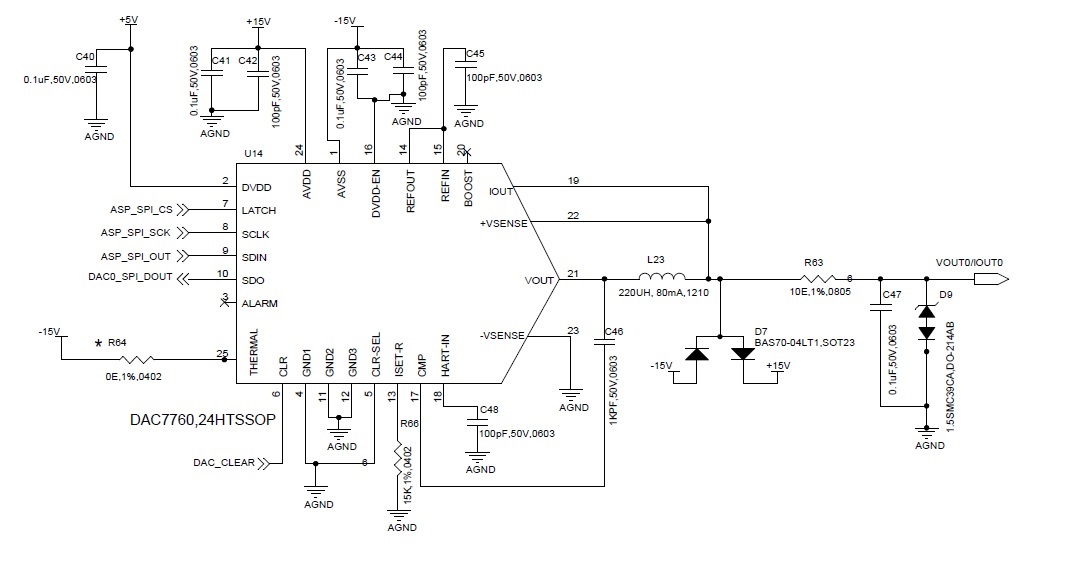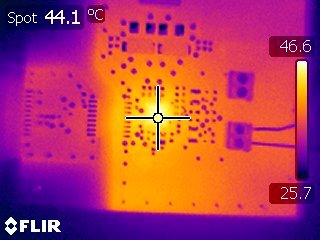Other Parts Discussed in Thread: LM317, MC34063A, DAC8760
Hi,
I am using DAC7760 in one of our design.
DAC7760 used to generate voltage and current outputs i.e 0 to10V , -10V to +10V , 4 to 20mA and 0 to 20mA. ( One output at a time).
Please find below schematics
1. In PCB design thermal PAD provided to DAC7760 . Also This thermal PAD is electrically not connected to any supply in design.
Problems observed :- DAC7760 overheating observed for current and voltage both outputs. (Above 90 Deg. cel)



